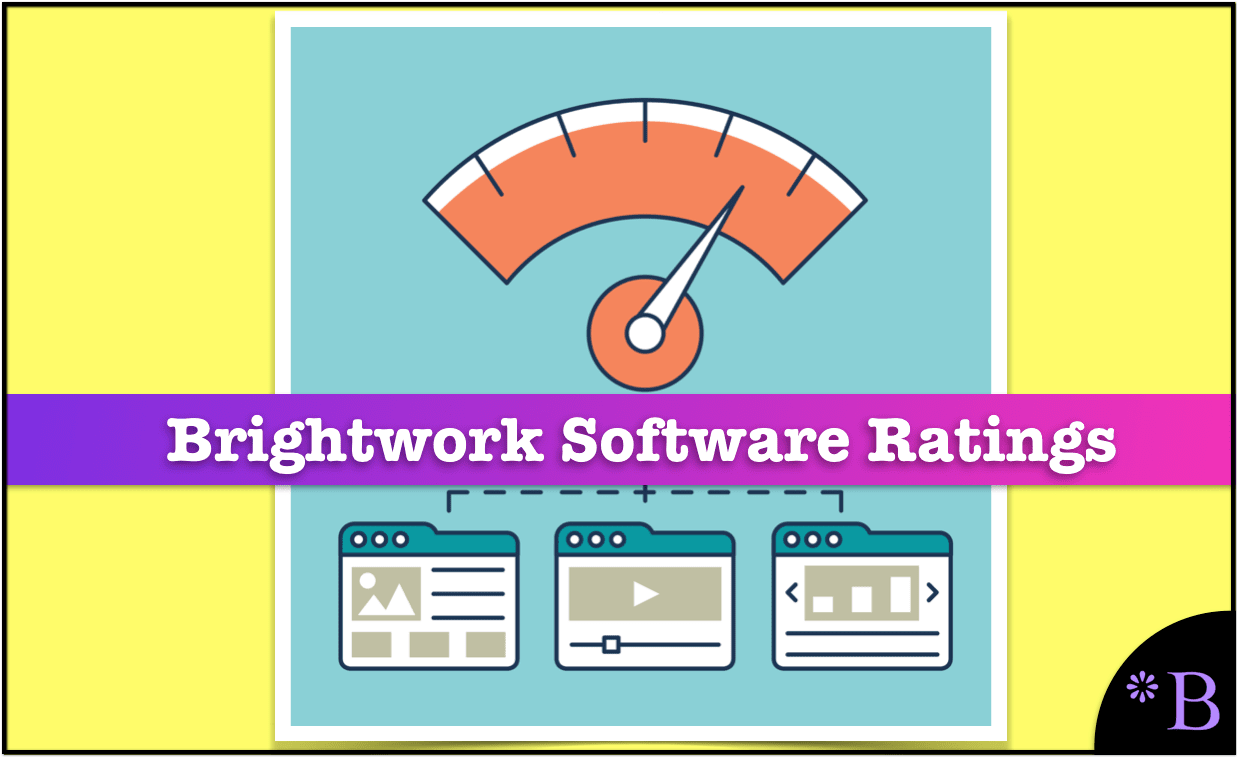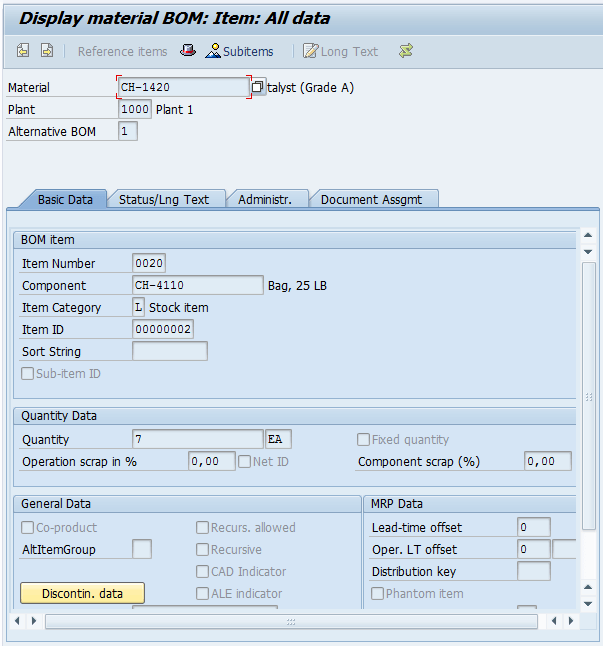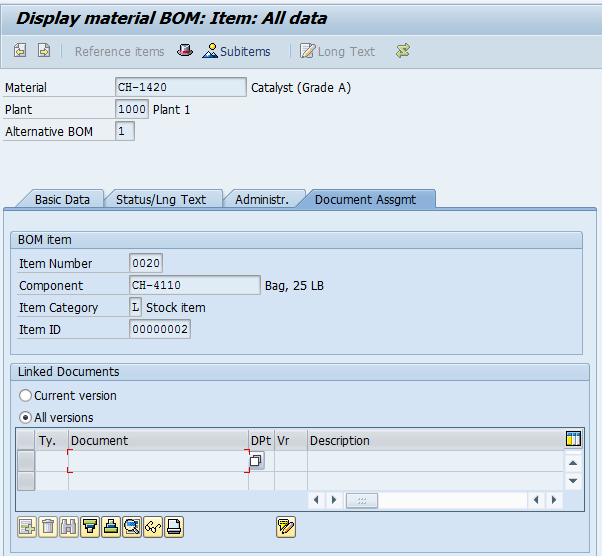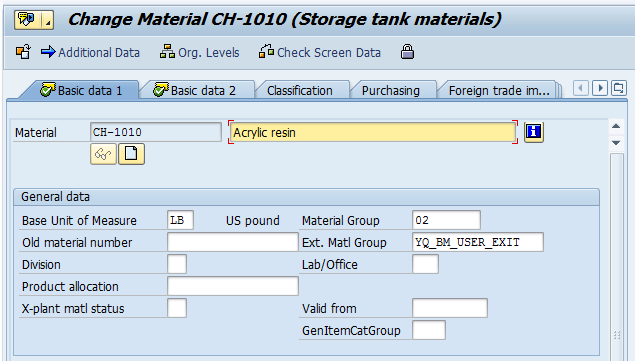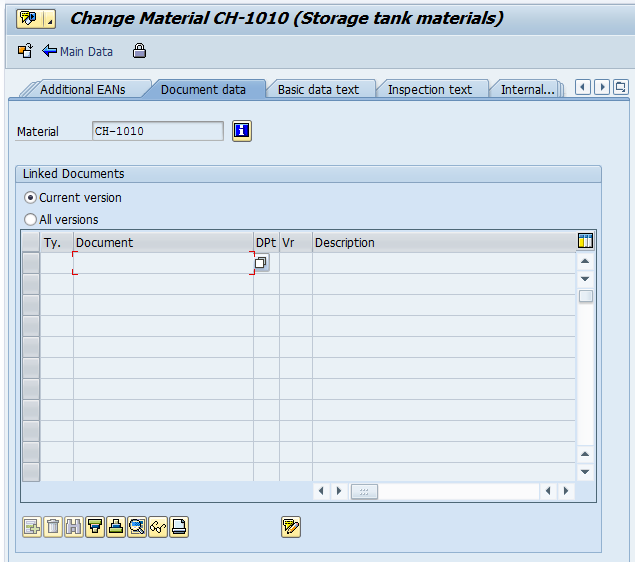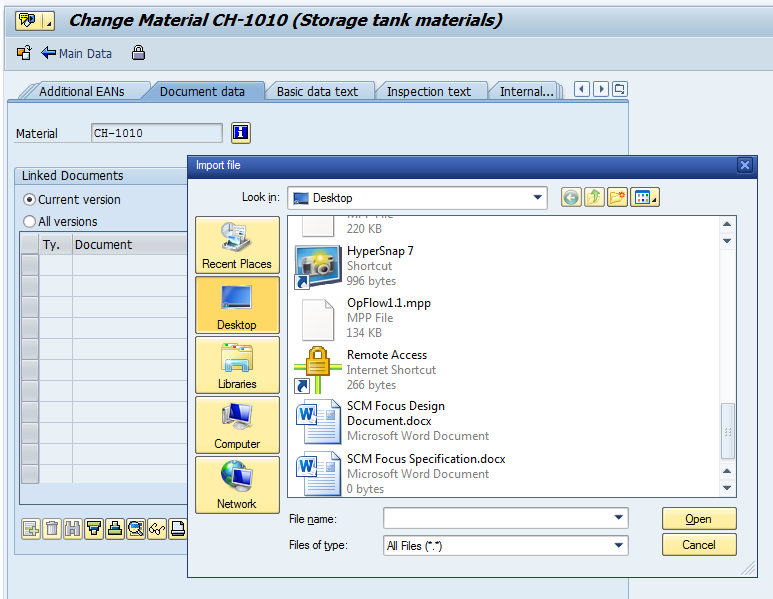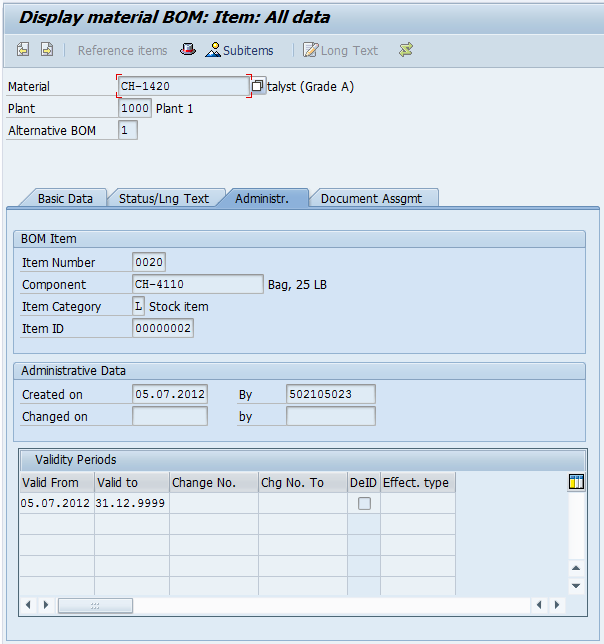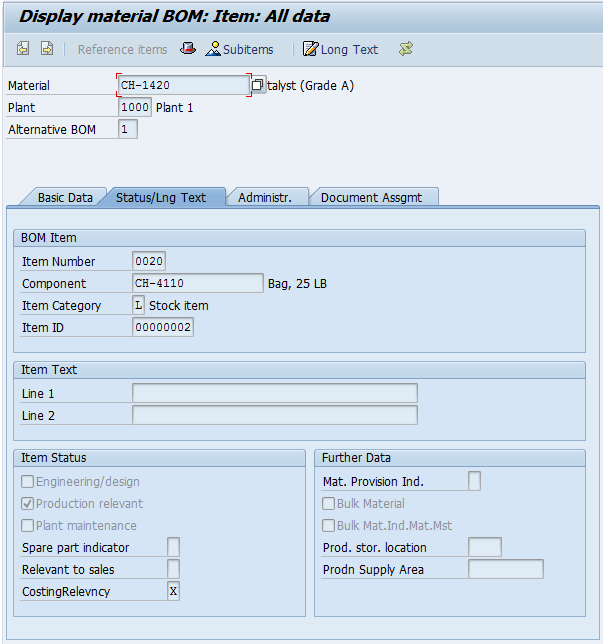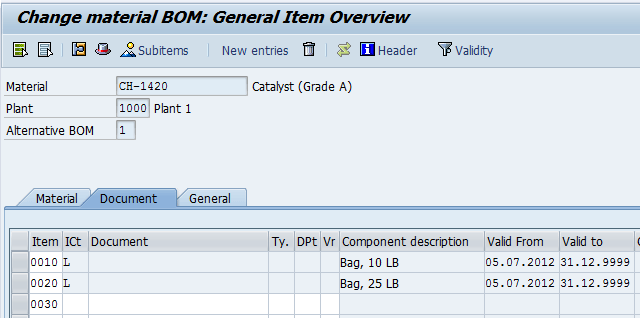Executive Summary
- This is the Brightwork Research & Analysis software rating series.
- We rate both the software and estimate the risk of implementing each application.
MUFI Rating & Risk for SAP PLM
MUFI: Maintainability, Usability, Functionality, Implement ability
Vendor: SAP (Select For Vendor Profile)
Introduction
SAP’s PLM solution is not an application but is rather a combination of various functionalities that are spread throughout SAP’s various applications. SAP has been misleading companies about its “PLM” solution for at least ten years – from the time when they offered vaporware entirely concerning this solution to where they now provide a confusing mishmash of functionality that is still not what we considered to be a viable solution. This analysis will explain how lacking SAP’s PLM solution is, and will also show how solutions can be manufactured and sold, without actually have a real product to sell.
Application Detail
To provide some product for the PLM market, SAP at some point decided to create a false solution, which simply highlighted various life-cycle functionality that already existed in various applications. They made some very minor adjustments to the material master, which is where product data is stored in SAP ERP (aka ECC/R/3). What this means is that various pre-existing modules have been created around the material master to meet PLM requirements. This is much like SAP’s non-existent digital asset management solution – where digital media are entered as materials into SAP. This was one of the more brazen attempts of product adjustment I have witnessed, as the material master is not designed to hold the media files necessary for a true PLM/BOM management system. Without the media files, the system can never be integrated with design and engineering.
There are two ways of SAP solutions that are analyzed in this section. One is the material master and BOM transaction that reside inside of SAP Materials Management (MM). The second is the SAP “solution” PLM. Neither one of these rank well in any of the functionality. This is apparently because the SAP material master and BOM transactions are simply a repository of material information rather than being a BOM solution. That is a true BOM management solution that would feed SAP MM. The material master and BOM transaction then hold this data for the purposes of running the ERP system. It is a mistake to compare the functionality in these two transactions with real BOM management functionality.
After burning many companies with their non-PLM solution, SAP decided to purchase Right Hemisphere Visual Enterprise Solutions – which had 3D visualization, collaboration, and publishing solutions. However, most of what Right Hemisphere had was not PLM, it was CAD and CAD management. Although SAP touts this solution as a PLM solution, CAD or 3D visualization software is not part of the PLM. Instead, CAD systems provide input to the BMMS, meaning that your selection of a PLM system has the potential to control your selection of a CAD solution, which should not happen. Furthermore, most companies already selected their CAD systems and had been using them for years. For them, migrating to Right Hemisphere just to use SAP’s PLM solution makes little sense. In contrast, the applications of Arena Solutions and Agile do not require a specific CAD application. It’s concerning that SAP executives don’t fundamentally “get” PLM, and this leads them to purchase a CAD/management solution. If one looks at the PLM/BOM Management leaders like Arena Solutions and Hamilton Grant, neither of them are offering a CAD solution; it is simply a different classification of software.
Secondly, SAP has a partnership with Right Hemisphere for some time, and SAP has had enormous problems with PLM, so once one gets past the marketing hyperbole, its difficult to see what has changed with the reboot. SAP had no option here, as their existing “PLM” solution was dead in the water and needed a new product or a new direction, but this reboot seems to lack substance.
However, the problem with buying a PLM solution from SAP is that PLM software is highly collaborative. SAP is not in a good position to create PLM software because all of their applications are designed to be used within the four walls of one company.
A central assumption of SAP is that design and engineering work with the SAP ERP system, when in fact they do not. Statements such as these can make executives think that design and engineering can be expected to perform their work in SAP ERP and that the needs of design and engineering are covered, when in fact they are not.
The following information is the “header” data. By selecting the “Subitems” button, one is taken to the material list. The material list shows the material association that makes up the BOM and has the following fields:
- Item
- Component
- Component Description
- Quantity
- Unit of Measure
- Valid From
- Valid to
- Item Category
- Item IDs
- Assembly
- Sub Items
If this seems extremely limited, especially to those with a background in design and engineering, you are correct: it is quite limited. In fact, only a small subset of the design and engineering BOM is required for supply chain planning and execution. Although some fields such as “plant” exist in the M (materials) BOM, they are not necessary for the E (engineering) BOM.
Document Attachment to the BOM and the Material Master in SAP ERP
In SAP ERP the BOM has a series of fields, listed above, that describe the BOM. In SAP ERP, documents (including CAD documents and other design and engineering documents) can be attached to either the BOM or to the components of the BOM, which is in the material master. The attachments can be performed in the Documents tab of the BOM, as shown in the screenshot below:
Creating an attachment to the material master is shown below:
Selecting the Additional Data button will take you to the area of the Material Master interface where documents can be attached.
Once in this view, the button in the upper left corner can be selected to display the option to attach a document, which brings up the following screen.
However, while attaching documents to a material master is often described in SAP documentation, in fact, it is rarely done because design and engineering seldom use the ERP system. The material master in ERP is simply designed to support the ERP functionality; it is not a functional BOM interface that those who work with the BOM would use to interact with the BOM. Therefore, when this approach to managing documents is presented to executives of an implementing company, they might consider this function to be useful and to meet part of their requirements, when in fact it is not particularly valuable for their employees. That is, it is unreasonable to expect someone to manage BOM design and engineering documents in SAP.
Exploring the SAP BOM User Interface
The SAP BOM interface is extremely limited such that it can be shown in just a few screenshots. The SAP BOM functionality remains relatively static. Hopefully, the following screenshots will demonstrate to you that you should not count on manipulating or otherwise managing your BOMs in SAP ERP. Instead, you want to do all the work in an external system and then merely populate the necessary fields in the SAP BOM through an interface. In fact, I suggest comparing and contrasting the screenshots below with the numerous screenshots of Arena Solutions provided throughout this book, and visualizing what it might be like to manage the BOM information in each system.
The following screenshots show the SAP BOM interface.
Surprisingly, that is it. The functionality has the following characteristics:
- The association between all of the materials that are part of the BOM is shown in the BOM Material tab. The list is not indented to show the hierarchy of the BOM. The hierarchy must be determined by reading the description of the “component” or material that is on the list.
- The interface is designed for access by internal employees and has no web interface. In any case, because this data is used by the ERP system to generate its output, you would never want external parties to be able to access these screens.
Engineering Change Management in SAP ERP
SAP has a functionality called Engineering Change Management (ECM), which allows users to apply validity periods to the components that make up the BOM. This functionality is necessary to control how MRP plans future order proposals (planned orders or purchase requisitions) when new elements are being phased in, and old components are being phased out. Additionally, reason codes are used to control how the manufacturing plant changes the BOM. SAP also offers a report that provides visibility into the changed items. Rather than expecting very much ECM functionality in SAP ERP, it is best to perform engineering change management in the BOM management system, and then reflect the changes in SAP ERP.
SAP continues to make adjustments to its “PLM” solution, but it is amazing after all these years that they have so little. SAP has always been more focused on marketing PLM than actually developing their PLM solution. SAP PLM is not an option that buyers should consider because SAP PLM is not a real application. SAP PLM does not make sense even if 100% of a buyer’s current systems are SAP. Arena Solutions or Hamilton Grant can be made to work fairly easily with any SAP or non-SAP system.
MUFI Scores
All scores out of a possible 10.
MUFI Scores
- Ma. = Maintainability
- Us. = Usability
- Fu. = Functionality
- Im. = Implementability
| App | Ma. | Us. | Ft. | Im. | Cat. |
|---|---|---|---|---|---|
| Average Score for Big ERP | 5.1 | 4.8 | 5.2 | 5.4 | Big ERP |
| Average Score for CRM | 6.2 | 6.2 | 5.1 | 5.9 | CRM |
| Average Score for Small and Medium ERP | 8.3 | 8 | 6.7 | 8.5 | Small and Medium ERP |
| Average Score for Finance | 8.8 | 8.8 | 8 | 8.8 | Finance |
| Average Score for Demand Planning | 7.6 | 7.2 | 7 | 7.1 | Demand Planning |
| Average Score for Supply Planning | 6.7 | 6.9 | 7 | 6.8 | Supply Planning |
| Average Score for Production Planning | 6.8 | 6.9 | 7 | 6.9 | Production Planning |
| Average Score for BI Heavy | 5.5 | 5.3 | 6.9 | 5.3 | BI Heavy |
| Average Score for PLM | 7 | 7.2 | 6.8 | 7.3 | PLM |
| Average Score for BI Light | 7.7 | 8.7 | 9 | 8.3 | BI Light |
| Arena Solutions Arena PLM | 10 | 10 | 10 | 10 | PLM |
| AspenTech AspenOne | 4 | 8 | 10 | 7 | Production Planning |
| Birst | 8 | 8.5 | 10 | 8 | BI Light |
| ERPNext | 10 | 10 | 7.5 | 10 | Small and Medium ERP |
| Delfoi Planner | 8 | 6 | 6.5 | 7 | Production Planning |
| Demand Works Smoothie SP | 9 | 10 | 7 | 10 | Supply Planning |
| Hamilton Grant RM | 10 | 9 | 8.5 | 9 | PLM |
| IBM Cognos | 2.7 | 3 | 1.5 | 3 | BI Heavy |
| Infor Epiphany | 7 | 8 | 6 | 5 | CRM |
| Infor Lawson | 8 | 7 | 6 | 7 | Big ERP |
| Intuit QuickBooks Enterprise Solutions | 9 | 9 | 5 | 9 | Finance |
| JDA DM | 9 | 7.5 | 8 | 8 | Demand Planning |
| Microsoft Dynamics CRM | 2 | 3 | 2 | 2 | CRM |
| NetSuite CRM | 6 | 4 | 3 | 3 | CRM |
| Netsuite OneWorld | 7 | 7 | 8 | 8 | Big ERP |
| OpenERP | 7 | 8 | 8.5 | 8 | 7 |
| Oracle BI | 4 | 4 | 3 | 6 | BI Heavy |
| Oracle CRM On Demand | 4 | 5 | 3 | 5 | CRM |
| Oracle Demantra | 5 | 3 | 3.5 | 4.5 | Demand Planning |
| Oracle JD Edwards World | 4 | 1 | 3 | 6 | Big ERP |
| Oracle RightNow | 6 | 7 | 4 | 5 | CRM |
| PlanetTogether Galaxy APS | 10 | 10 | 10 | 10 | Production Planning |
| Preactor | 8 | 7 | 3 | 7 | Production Planning |
| QlikTech QlikView | 9 | 9 | 10 | 9 | BI Light |
| Rootstock | 9 | 8 | 9 | 9 | Small and Medium ERP |
| Sage X3 | 8 | 8 | 7 | 8 | Big ERP |
| Salesforce Enterprise | 8 | 8.5 | 9 | 7.5 | CRM |
| SAP APO DP | 3 | 4 | 3 | 2 | Demand Planning |
| SAP APO PP/DS | 2 | 2 | 4 | 3 | Production Planning |
| SAP APO SNP | 3 | 4 | 8 | 4 | Supply Planning |
| SAP BI/BW | 1.5 | 2 | 4 | 2 | BI Heavy |
| SAP Business Objects | 3 | 2.5 | 7 | 3 | BI Heavy |
| SAP CRM | 4 | 3 | 6 | 4 | CRM |
| SAP ECC | 3 | 3 | 6.5 | 3 | Big ERP |
| SAP PLM | 1 | 2.5 | 2 | 3 | PLM |
| SAP SmartOps | 4 | 4 | 7 | 5.5 | Supply Planning |
| SAS BI | 6.5 | 7 | 9 | 6 | BI Heavy |
| SAS Demand Driven Forecasting | 7 | 8 | 9 | 7 | Demand Planning |
| Tableau (BI) | 9 | 10 | 10 | 10 | BI Light |
| Tableau (Forecasting) | 10 | 8 | 5 | 9 | Demand Planning |
| Teradata | 8 | 6.3 | 9.7 | 6 | BI Heavy |
| ToolsGroup SO99 (Forecasting) | 7 | 8 | 9 | 7 | Demand Planning |
| ToolsGroup SO99 (Supply) | 5 | 6 | 10 | 7 | Supply Planning |
Vendor and Application Risk
SAP PLM cannot be implemented because it is not an actual product. At some point in the future SAP, through more acquisitions and more integration develop a sellable solution, but there is no advice we can give that will make an SAP PLM implementation a success.
Likelihood of Implementation Success
This accounts for both the application and vendor-specific risk. In our formula, the total implementation risk is application + vendor + buyer risk. The buyer specific risk could increase or decrease this overall likelihood and adjust the values that you see below.
Likelihood of Application Implementation Success and Failure
Search for the application in this table using the search bar in the upper right of the table.
| Application | Prob of Implementation Success | Prob of Implementation Failure |
|---|---|---|
| Actuate | 0.77 | 0.23 |
| SAP Smartops | 0.39 | 0.61 |
| NetSuite CRM | 0.46 | 0.54 |
| Sugar CRM | 0.62 | 0.48 |
| Base CRM | 0.91 | 0.09 |
| SAP CRM | 0.35 | 0.65 |
| Salesforce Enterprise | 0.72 | 0.28 |
| QlikTech QlikView | 0.82 | 0.18 |
| Tableau (BI) | 0.98 | 0.02 |
| SAP Crystal Reports | 0.46 | 0.54 |
| Brist | 0.83 | 0.17 |
| MicroStrategy | 0.7 | 0.3 |
| SAS BI | 0.76 | 0.24 |
| Oracle BI | 0.35 | 0.65 |
| IBM Cognos | 0.23 | 0.77 |
| Infor Epiphany | 0.58 | 0.42 |
| Microsoft Dynamics CRM | 0.26 | 0.74 |
| Oracle RightNow CRM | 0.41 | 0.59 |
| Oracle CRM On Demand | 0.36 | 0.64 |
| Teradata | 0.76 | 0.24 |
| SAP Business Objects | 0.32 | 0.68 |
| SAP BI/BW | 0.25 | 0.75 |
| SAP PLM | 0.29 | 0.71 |
| Hamilton Grant RM | 0.89 | 0.11 |
| Arena Solutions | 0.96 | 0.04 |
| Delfoi Planner | 0.7 | 0.3 |
| Preactor | 0.64 | 0.36 |
| PlanetTogether Galaxy APS | 0.96 | 0.04 |
| AspenTech AspenOne | 0.55 | 0.45 |
| SAP APO PP/DS | 0.27 | 0.73 |
| Demand Works Smoothie SP | 0.93 | 0.07 |
| ToolsGroup SO99 (Supply) | 0.82 | 0.18 |
| Demand Works Smoothie | 0.96 | 0.04 |
| Tableau (Forecasting) | 0.9 | 0.1 |
| SAS Demand Driven Forecasting | 0.82 | 0.18 |
| ToolsGroup SO99 (Forecasting) | 0.86 | 0.14 |
| JDA DM | 0.57 | 0.43 |
| Oracle Demantra | 0.33 | 0.67 |
| SAP APO DP | 0.28 | 0.72 |
| FinancialForce | 0.92 | 0.08 |
| Intacct | 0.98 | 0.02 |
| Intuit QB Enterprise | 0.8 | 0.2 |
| ERPNext | 0.9 | 0.1 |
| OpenERP | 0.78 | 0.22 |
| Rootstock | 0.91 | 0.09 |
| ProcessPro | 0.93 | 0.07 |
| Microsoft Dynamics AX | 0.4 | 0.6 |
| SAP Business One | 0.49 | 0.51 |
| Sage X3 | 0.62 | 0.38 |
| Infor Lawson | 0.58 | 0.42 |
| Epicor ERP | 0.4 | 0.6 |
| Oracle JD Edwards World | 0.31 | 0.69 |
| Oracle JD Edwards EnterpriseOne | 0.36 | 0.64 |
| SAP ERP ECC/R/3 | 0.32 | 0.68 |
| NetSuite OneWorld | 0.65 | 0.35 |
Risk Definition
See this link for more on our categorizations of risk. We also offer a Buyer Specific Risk Estimation as a service for those that want a comprehensive analysis.
Risk Management Approach
There is little point in attempting to implement SAP PLM.
Finished With Your Analysis?
To go back to the Software Selection Package page for the BI Light software category. Or go to this link to see other analytical products for SAP PLM.
